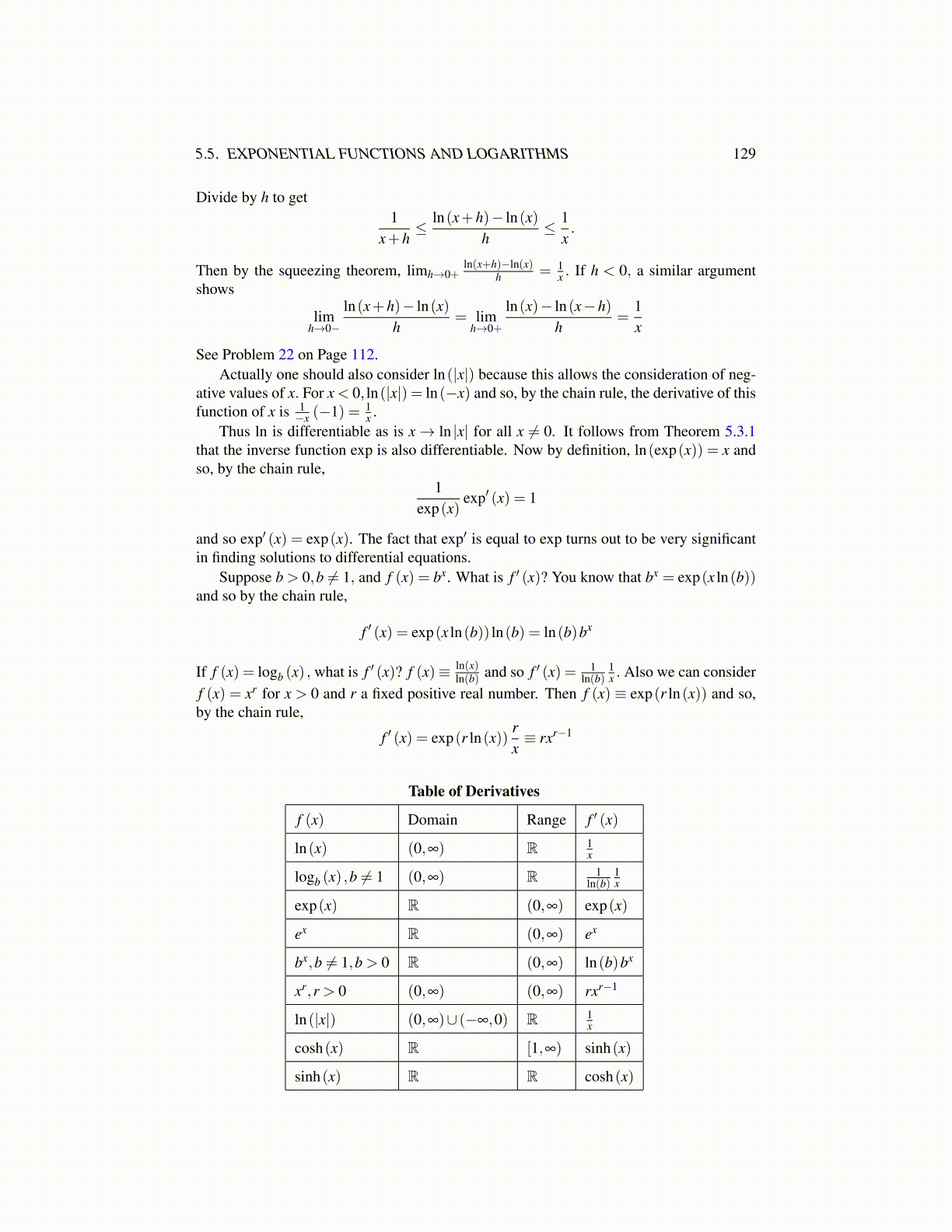
5.5. EXPONENTIAL FUNCTIONS AND LOGARITHMS 129
Divide by h to get1
x+h≤ ln(x+h)− ln(x)
h≤ 1
x.
Then by the squeezing theorem, limh→0+ln(x+h)−ln(x)
h = 1x . If h < 0, a similar argument
shows
limh→0−
ln(x+h)− ln(x)h
= limh→0+
ln(x)− ln(x−h)h
=1x
See Problem 22 on Page 120.Actually one should also consider ln(|x|) because this allows the consideration of neg-
ative values of x. For x < 0, ln(|x|) = ln(−x) and so, by the chain rule, the derivative of thisfunction of x is 1
−x (−1) = 1x .
Thus ln is differentiable as is x → ln |x| for all x ̸= 0. It follows from Theorem 5.3.1that the inverse function exp is also differentiable. Now by definition, ln(exp(x)) = x andso, by the chain rule,
1exp(x)
exp′ (x) = 1
and so exp′ (x) = exp(x). The fact that exp′ is equal to exp turns out to be very significantin finding solutions to differential equations.
Suppose b > 0,b ̸= 1, and f (x) = bx. What is f ′ (x)? You know that bx = exp(x ln(b))and so by the chain rule,
f ′ (x) = exp(x ln(b)) ln(b) = ln(b)bx
If f (x) = logb (x) , what is f ′ (x)? f (x)≡ ln(x)ln(b) and so f ′ (x) = 1
ln(b)1x . Also we can consider
f (x) = xr for x > 0 and r a fixed positive real number. Then f (x) ≡ exp(r ln(x)) and so,by the chain rule,
f ′ (x) = exp(r ln(x))rx≡ rxr−1
Table of Derivatives
f (x) Domain Range f ′ (x)
ln(x) (0,∞) R 1x
logb (x) ,b ̸= 1 (0,∞) R 1ln(b)
1x
exp(x) R (0,∞) exp(x)
ex R (0,∞) ex
bx,b ̸= 1,b > 0 R (0,∞) ln(b)bx
xr,r > 0 (0,∞) (0,∞) rxr−1
ln(|x|) (0,∞)∪ (−∞,0) R 1x
cosh(x) R [1,∞) sinh(x)
sinh(x) R R cosh(x)